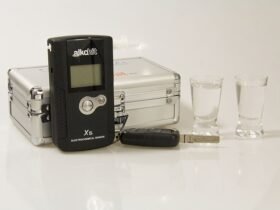Blood test
A blood test is an analysis of our blood sample that is always pulled out from our veins.
What is an mch in a blood test?
MCH is a short form of Mean Corpuscular Haemoglobin.
MCH is an acronym for ‘Mean Corpuscular Haemoglobin.’It refers to the average Amount of hemoglobin present in a single red blood cell. It is one of the standard measurements in a complete blood test.
Hemoglobin is the protein in each of the red blood cells that transports oxygen to your body.
Check This Below Video To Know What is an MCH in a blood test?
MCH has two aspects –
- Mean Corpuscular Volume (MCV) – is the measurement of the average size of the red blood cell, also known as erythrocytes.
- Mean Corpuscular Haemoglobin Concentration (MCHC) – is the calculation of the Amount of hemoglobin per unit volume in a red blood cell.
Together MCH, MCV, MCHC is sometimes referred to as red blood cell indices.
How is MCH determined?
It is determined using a complete blood count (CBC) panel.
It is determined by dividing the Amount of hemoglobin by the number of red blood cells present.
MCH = Amount of hemoglobin
Number of red blood cells
Why is MCH used?
It is a routine screening test that measures many aspects of your blood. It is used to diagnose certain blood disorders. The symptoms include –
- Fatigue
- Cold hands and feet
- Pale skin
- Unusual bleeding
What do the results show?
The results show whether you have low or high mch. The natural range of mch in any blood test is between 27.5 and 33.2 picograms(pg).
Low mch –
An MCH which is below 27.5 pg is low, which means that there is a less amount of hemoglobin present per red blood cell. Having low mch is connected with anemia. But it may also include –
- Iron deficiency(iron is crucial for the production of hemoglobin)
- Cancer
- Liver disease
- Kidney disease
- Thalassemia (a common inherited blood disorder caused by a genetic mutation in the hemoglobin genes)
Symptoms of low mch –
- Breathing problem chest pain
- Fast heartbeat
- Fatigue
- Pale skin
- Headache
High mch –
An mch that is above 33.2 pg is considered a high mch, which means that there is a large amount of hemoglobin present per red blood cell. It includes –
- Lung disease
- Kidney disease
- Heart defects
- Polycythemia ( a rare blood disease typically caused by genetic mutation)
- Deficiency of B vitamins, B12 and folate (they develop when your diet is low in B vitamins )
Symptoms of high mch –
- Headaches
- Itching
- Dizziness
- Blood clot
The risk involved in a test –
There is a little risk involved. You might feel uneasy or dizzy. Or you might get bruises where the needle was put in, but most of the symptoms go away very quickly.
Treatment for high and low mch –
Low mch – treatment can include adding iron-rich foods. In many rare cases, you may need a blood transfusion.
High mch – it can include adding foods rich in vitamin B12
Summary –
If your mch is in the natural range, it means that you do not have any medical complications. Low mch is mostly caused by a deficiency of iron, commonly known as anemia. This can be treated by changing your lifestyle and adding more iron supplements to your food. At the same time, high mch is caused by deficiency of vitamin B12.
It is always told to see a doctor if you are concerned about your mch results. It is always better to be sure without taking any step further.


Leave a Reply